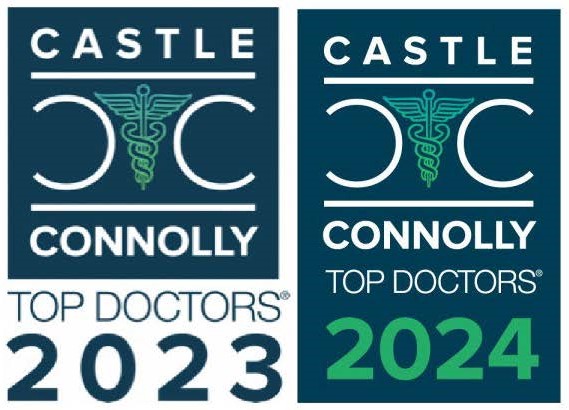
Posttraumatic Stress Disorder (PTSD) is a heavy burden for millions. It is estimated to affect over 13 million Americans. Meanwhile, veterans are particularly at risk. Their service often exposes them to traumatic experiences like combat.
Traditional treatments like medication and therapy have helped many. However, they aren’t a cure-all. Countless veterans continue to struggle with symptoms like flashbacks, anxiety, and constant hypervigilance. All are still searching for effective relief.
Now, a promising breakthrough has emerged. New research shows that Magnetic Resonance Therapy (MeRT) may offer a solution. For veterans, this may be the answer they have been looking for.
Why Treating PTSD in Veterans Is So Challenging?
Approximately 6% of the general population will experience PTSD in their lifetime. That rate jumps significantly for veterans, with around 11-20% of those who served in Operations Iraqi Freedom (OIF) and Enduring Freedom (OEF) suffering from PTSD annually. This disorder’s complexity makes treatment a real challenge for a few key reasons:
Diverse and Intensely Personal Symptoms
Every veteran’s PTSD journey is different. The symptoms can range from flashbacks and severe anxiety to emotional numbness, hypervigilance, sleep problems, and mood swings. Because these symptoms are rooted in each person’s trauma, the treatment has to be just as unique. This often means using a mix of different therapies, as there’s no universal solution.
Trauma-Induced Neurological Changes
Trauma in veterans often leaves a lasting impact on the brain. The amygdala, which controls emotions and fear, becomes overactive. Meanwhile, the prefrontal cortex, which is important for rational thinking, is weak.
Chronic stress can also shrink the hippocampus, affecting memory. These changes make it challenging to respond to traditional therapies. The brain regions needed to manage stress and fear are altered.
Co-occurring Mental Health and Substance Use Disorders
Around 80% of veterans with PTSD also struggle with additional mental health conditions, such as depression or anxiety. A VA study found that nearly 25% of veterans with PTSD also have a substance use disorder, often as a way to self-medicate. This dual diagnosis complicates treatment, as each condition can worsen the other.
Treatment Resistance and Gaps in Effectiveness
While evidence-based therapies like CBT, Prolonged Exposure (PE), and Eye Movement Desensitization and Reprocessing (EMDR) are often recommended, they don’t work for everyone.
Studies revealed that veterans do not respond adequately to these interventions. Leaving them symptomatic and at risk for ongoing distress. Similarly, nearly 60% of veterans drop out of trauma-focused treatments before completing the full course.
Social Stigma and Barriers to Care Access
Mental health challenges are often seen as a sign of weakness in military culture. According to experts, over 60% of veterans do not seek help. Mental health stigma could be the reason. They might be perceived that seeking help might harm their careers or lead to peer judgment. Moreover, More than 4 million veterans live in rural areas where resources for mental health treatment are limited. So, there could be a delay or inconsistency in treatment.
High Relapse Rates and Exposure to Triggers
Even after treatment, veterans can still be vulnerable to relapse. Everyday things like fireworks, crowded spaces, or even certain smells can trigger symptoms. These triggers are powerful and can bring back distressing experiences. Anniversaries of traumatic events or big life changes can make symptoms worse.
Physical Health Complications and Impact on Daily Life
Veterans with PTSD often deal with physical health problems like cardiovascular disease, chronic pain, and sleep issues such as insomnia or OSA. In fact, research shows they’re 47% more likely to develop heart disease. These health challenges can create a vicious cycle that worsens mental health symptoms.
The Importance of Multi-Modal, Long-Term Approaches
The unique nature of PTSD among veterans necessitates multi-faceted treatments. This can include a combination of therapy, medication, community support, and emerging treatments like Magnetic Resonance Therapy (MRT). It’s not just about reducing symptoms temporarily. It’s about equipping veterans with long-term coping mechanisms, personalized support systems, and ongoing access to care to manage symptoms over time.
What Makes EEG Alpha Power Important in PTSD Recovery?
Brainwave activity is complicated. But alpha waves, in particular, are fundamental in mental states such as relaxation, focus, and readiness. It is significant in PTSD because:
- Role of Alpha Waves: Alpha waves, which range from 8 to 13 Hz, dominate the brain when a person is awake but relaxed (like in a meditative state). Healthy alpha activity is associated with reduced stress, emotional balance, and a calm, alert state of mind.
- Disrupted Alpha Patterns in PTSD: In PTSD, alpha power is often diminished. This loss is linked to hypervigilance, anxiety, and sleep disturbances — core symptoms of PTSD. The brain cannot enter a calm state. It remains stuck in a high-alert mode.
- Balance and Regulation: Increasing alpha power is believed to help regulate the brain’s response to stress and anxiety. This improves the ability to transition between states of rest and activity. It can also help the individual find a balance between being relaxed and focused. Something that’s often impaired in PTSD.
- EEG-Guided Treatments: MeRT therapy uses EEG to identify irregularities in brainwave activity. It enhances alpha power to help “re-train” the brain, guiding it back to more normalized functioning. This shift in brain activity is seen as a marker of recovery from PTSD. It may help alleviate symptoms like anxiety, hyperarousal, and emotional dysregulation.
Could MeRT Be Effective for Other Conditions Related to PTSD?
Yes, it’s particularly promising for conditions that share similar neurobiological roots. Some other disorders where MeRT might offer benefits are:
- Anxiety Disorders: Anxiety often coexists with PTSD, sharing symptoms like hypervigilance and heightened fear responses. Abnormal alpha power is also found in generalized anxiety disorder (GAD) and social anxiety. MeRT aims to normalize alpha activity, potentially helping manage anxiety. This may promote calmness and improve emotional regulation.
- Depression: Depression often coexists with PTSD, and EEG irregularities are common in those with depressive disorders. Research suggests that enhancing alpha power and stabilizing brainwave activity may reduce depressive symptoms.
- Traumatic Brain Injury (TBI): Brain injuries can alter EEG patterns. This can lead to mood disturbances, cognitive impairments, and emotional regulation issues. MeRT can be use to target brainwave dysregulation caused by TBI, potentially improving both physical and mental symptoms.
- Autism Spectrum Disorder (ASD): Abnormalities in brainwave patterns are not only present in PTSD but also in individuals with Autism Spectrum Disorder (ASD). Children and adults with ASD often show atypical alpha activity and other irregular brainwave patterns. Experts suggest that MeRT can help in enhancing social functioning, emotional regulation, and cognitive abilities in those with ASD.
- Substance Use Disorders: Substance abuse often arises as a coping mechanism for managing PTSD symptoms. The brainwave dysregulation seen in PTSD is also prevalent in substance use disorders. Many individuals show reduced alpha activity. Addressing these irregularities through MeRT may support recovery. It can help normalize brain function and reduce cravings or dependence.
- Sleep Disorders: PTSD is commonly linked with sleep disturbances. This could be insomnia and nightmares. Particularly, alpha power influences sleep onset and relaxation. Disrupted alpha waves are associated with poor sleep quality. MeRT may improve alpha regulation, helping individuals with PTSD or related conditions achieve better sleep.
What Does the Latest Study Reveal About MeRT’s Effectiveness?
A new study, “Magnetic Resonance Therapy Improves Clinical Phenotype and EEG Alpha Power in Posttraumatic Stress Disorder,” highlights how Magnetic Resonance Therapy (MRT) could benefit those with PTSD.
The study reviewed prospectively collected data on 21 veterans. All are consecutively treated for PTSD. Veterans were chosen as they are a population highly affected by PTSD. Each individual underwent MeRT for two weeks. They are receiving treatment frequencies specifically tuned to their dominant alpha-band EEG frequencies and heart rate.
Participants were evaluated using two primary measures:
- PTSD Checklist-Military Version (PCL-M): A widely-used self-report scale to assess PTSD symptoms.
- EEG Measures: Alpha and delta brainwave activity before and after treatment.
Of the 21 individuals who started therapy, 16 completed the treatment regimen. This two-week open-label study allowed researchers to compare clinical and EEG changes pre- and post-MeRT.
What Did the Study Find?
The study yielded notable results:
- PCL-M Scores Significantly Improved: The PCL-M score helps measure how severe PTSD symptoms are, with higher scores showing more severe distress. Before MeRT, participants had an average score of 54.9, indicating significant distress. After two weeks of MeRT treatment, that average dropped to 31.8. The statistical significance (P < 0.001) strongly suggests that this improvement was due to the MeRT treatment, not just by chance.
- Increased Alpha Power in EEG: EEG data revealed an increase in alpha-band power, rising from 32.0% to 38.5%. This result (P = 0.013) is significant. Higher alpha power is linked to a more relaxed and balanced state of mind. The increase in alpha activity hints at a shift toward more normalized brain patterns. This suggests that MeRT could help regulate brain function to support recovery from PTSD.
- Decrease in Delta Power in EEG: A key finding was the drop in delta-band power (1-4 Hz) from 32.3% to 26.8% (P = 0.028). Delta waves are usually linked to deep sleep. Delta waves are generally linked to deep sleep or unconscious states. After MeRT, the reduced delta activity suggests lower stress. This shift is significant for those with PTSD, where hypervigilance is common.
Implications: What Does This Mean for PTSD Treatment?
The study shows that MeRT may be a promising treatment for those with PTSD. Improvements in PCL-M scores suggest symptom relief. The EEG normalization hints that the therapy could be addressing the neural mechanisms underlying the disorder.
MeRT customizes treatment frequencies to each person’s unique brainwave patterns and heart rate. So, it can be a better treatment than more general treatments like medication or talk therapy.
Additionally, this therapy may be particularly helpful for those who haven’t responded to first-line PTSD treatments. This is a solution for individuals living with treatment-resistant PTSD.
Where Do We Go From Here?
The promising results of this study open up opportunities for more in-depth research into MeRT for PTSD. Conducting larger, randomized trials could help build stronger evidence and make MeRT a widely recognized treatment.
Looking at the long-term benefits of MeRT will also be beneficial. It’s also important to explore how effective it is across different types of PTSD. Plus, understanding its impact on other mental health conditions that often occur with PTSD could broaden its use.
How Does MeRT Compare to Other PTSD Treatments?
Here’s how it differs:
Personalized Brain Stimulation
Unlike standard Transcranial Magnetic Stimulation (TMS) that targets specific brain regions, MeRT (Magnetic e-resonance Therapy) is different for each person. It uses an EEG to map out an individual’s unique brainwave patterns.
This allows MeRT to identify which brain areas are either overactive or underactive. Based on this, it delivers targeted magnetic pulses to bring those brainwaves back into balance. It offers more precise treatment that directly addresses the brain’s irregular activity associated with PTSD.
Non-Invasive and Drug-Free
Medications like SSRIs (Selective Serotonin Reuptake Inhibitors) and SNRIs (Serotonin-Norepinephrine Reuptake Inhibitors) are common for PTSD. But they often come with side effects like sleep issues, digestive problems, and emotional blunting.
Yet, MeRT is a non-invasive alternative that doesn’t require medication. It works directly on brainwave activity without altering the body’s chemistry or having the potential side effects of drug treatments.
Shorter and More Focused Sessions
Therapies like Cognitive Behavioral Therapy (CBT) or Prolonged Exposure Therapy (PET) typically take weeks or months of regular sessions to show improvement.
MeRT aims to speed up this process, with sessions lasting around 30-40 minutes and adapted specifically to the individual’s brain patterns. Because the treatment is so personalized, many people experience noticeable relief from PTSD symptoms within a few weeks.
Addressing the Neurobiological Roots
Traditional talk therapies focus on changing thought patterns, processing trauma, and developing coping strategies. While effective, they primarily target the psychological aspects of PTSD.
MeRT, on the other hand, works on the neurobiological side by using magnetic pulses to modulate brainwave activity. This direct focus on the brain’s function offers a different way to address PTSD, targeting both the symptoms and the underlying brainwave imbalances.
Why Choose the TMS Institute of Arizona for PTSD Treatment?
PTSD can take over your life. But the TMS Institute of Arizona is here to help you take it back. We use a specialized treatment called MeRT (Magnetic e-Resonance Therapy), which goes beyond standard TMS.
Our team understands the exceptional challenges veterans face and knows how tricky PTSD can be. With MeRT, we offer a non-invasive, medication-free treatment that’s gentle yet effective. Particularly if traditional treatments haven’t worked. Every session is designed to help ease your symptoms and promote a sense of calm and balance.
You or someone you care about doesn’t have to face PTSD alone. Let us be part of your journey toward relief and resilience. Reach out. Let’s talk about how we can support you on the path to finding peace again.
References
Taghva, A., Silvetz, R., Ring, A., Kim, K. A., Murphy, K. T., Liu, C. Y., & Jin, Y. (2015). Magnetic Resonance Therapy Improves Clinical Phenotype and EEG Alpha Power in Posttraumatic Stress Disorder. Trauma Monthly, 20(4). https://doi.org/10.5812/traumamon.27360
Rural Health. (2024). Va.gov. https://www.research.va.gov/topics/rural_health.cfm
Sharp, M.-L. ., Fear, N. T., Rona, R. J., Wessely, S., Greenberg, N., Jones, N., & Goodwin, L. (2015). Stigma as a Barrier to Seeking Health Care Among Military Personnel With Mental Health Problems. Epidemiologic Reviews, 37(1), 144–162. https://doi.org/10.1093/epirev/mxu012
Study adds evidence on link between PTSD, heart disease. (2015). Va.gov. https://www.research.va.gov/currents/spring2015/spring2015-8.cfm
Thompson‐Hollands, J., Lee, D. J., & Sloan, D. M. (2021). The Use of a Brief Family Intervention to Reduce Dropout Among Veterans in Individual Trauma‐Focused Treatment: A Randomized Controlled Trial. Journal of Traumatic Stress, 34(4), 829–839. https://doi.org/10.1002/jts.22680
Statistics on Veterans and Substance Abuse – veteranaddiction.org. (2024, August 7). Veteranaddiction.org. https://veteranaddiction.org/resources/veteran-statistics/
VA.gov | Veterans Affairs. (2014). Va.gov. https://www.ptsd.va.gov/professional/treat/cooccurring/index.asp
Vets, non-vets work together to understand PTSD. (2022, November 10). NSF – National Science Foundation. https://new.nsf.gov/science-matters/vets-non-vets-work-together-understand-ptsd
Post-Traumatic Stress Disorder. (2023). National Institute of Mental Health (NIMH). https://www.nimh.nih.gov/health/publications/post-traumatic-stress-disorder-ptsd
Note: This article includes data from a scientific study. While the information provided is research-based, it should not be taken as medical advice. Consult a qualified healthcare professional for personalized recommendations.













